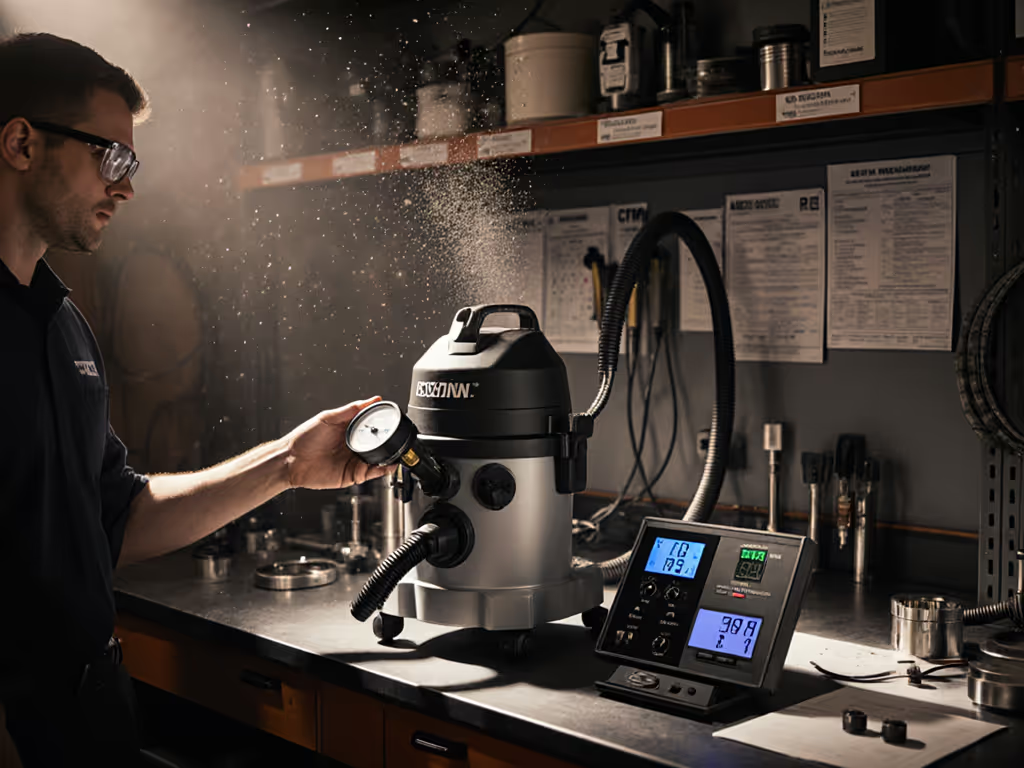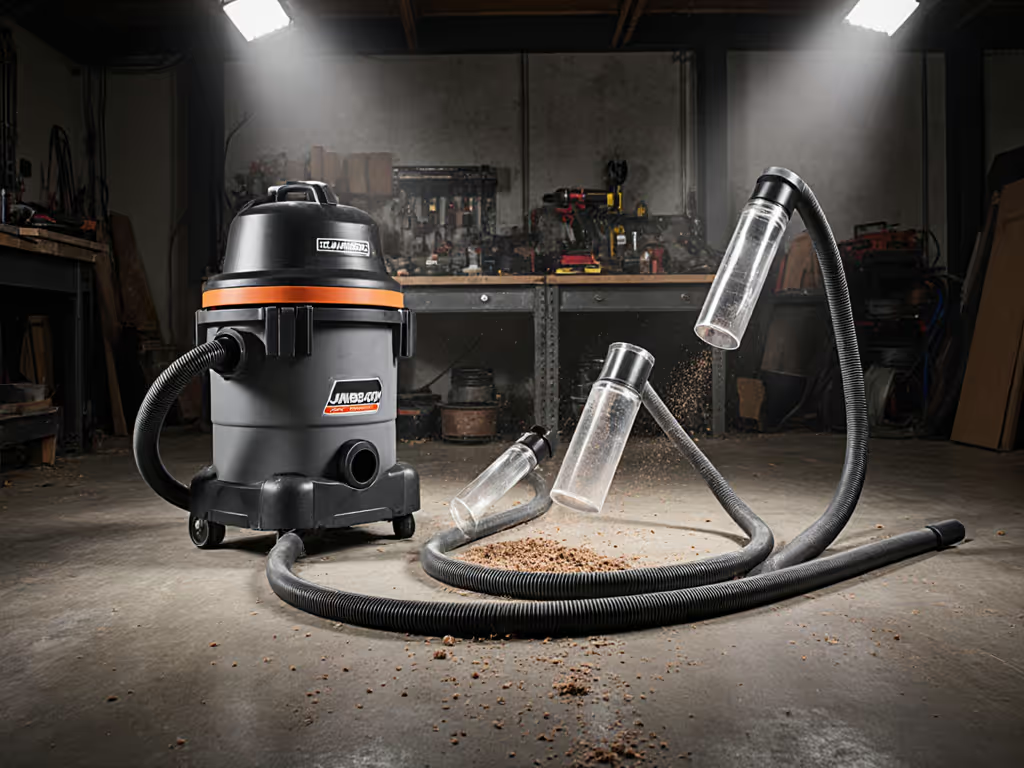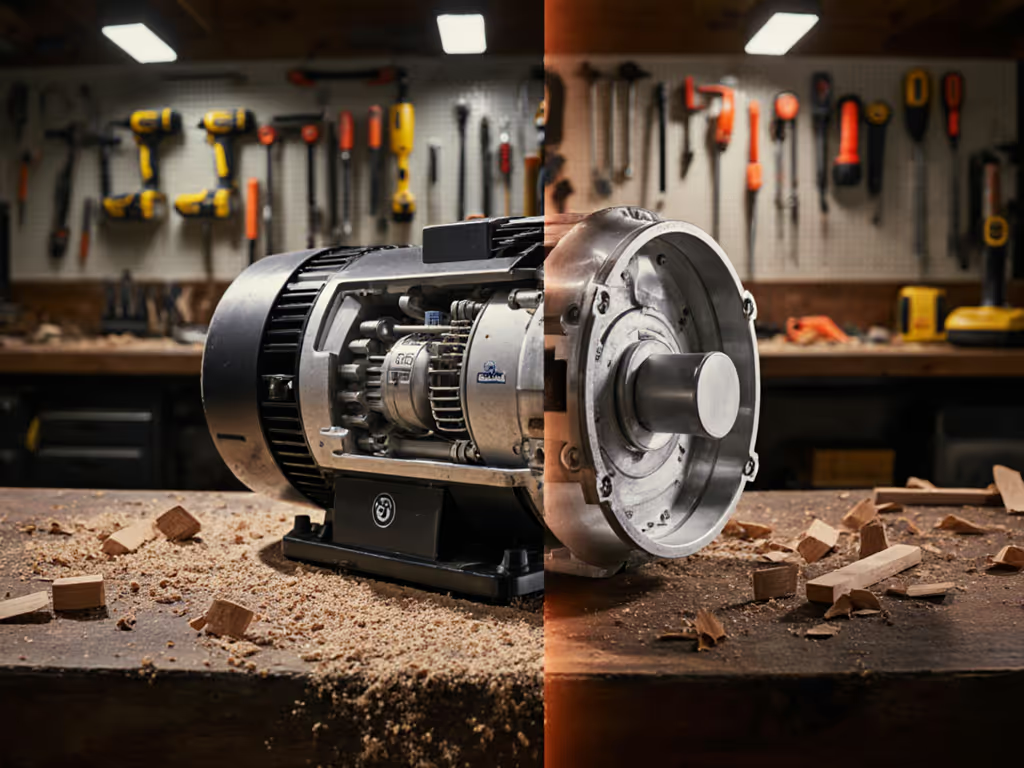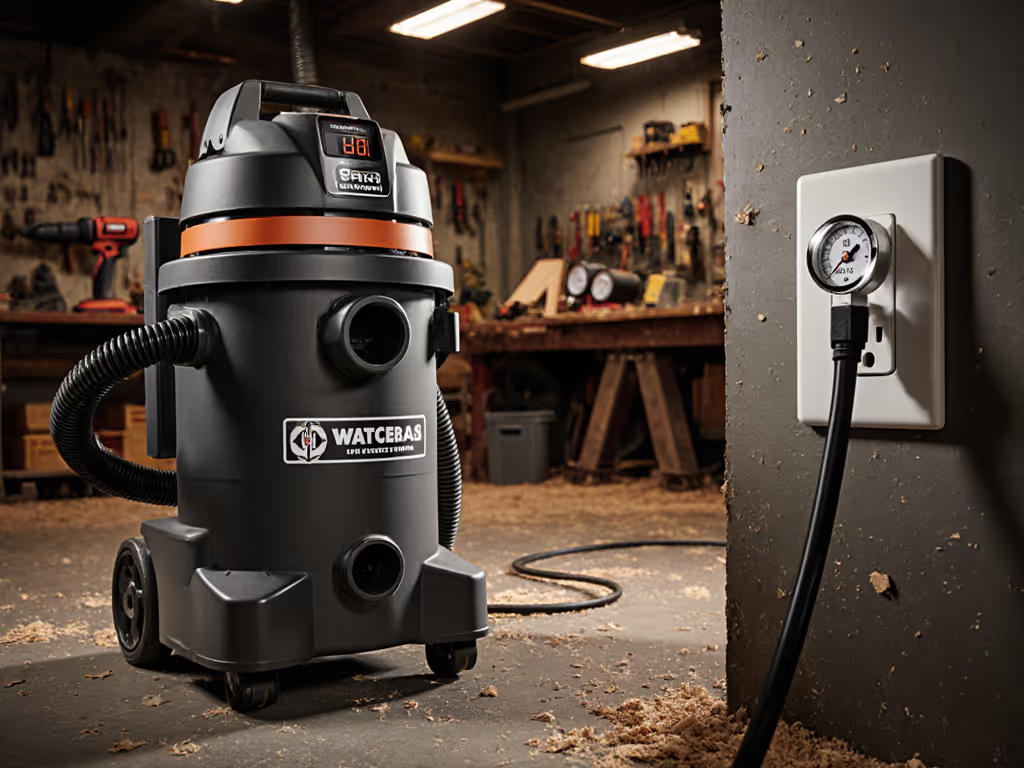
How Shop Vac Suction Works: CFM vs Water Lift Explained
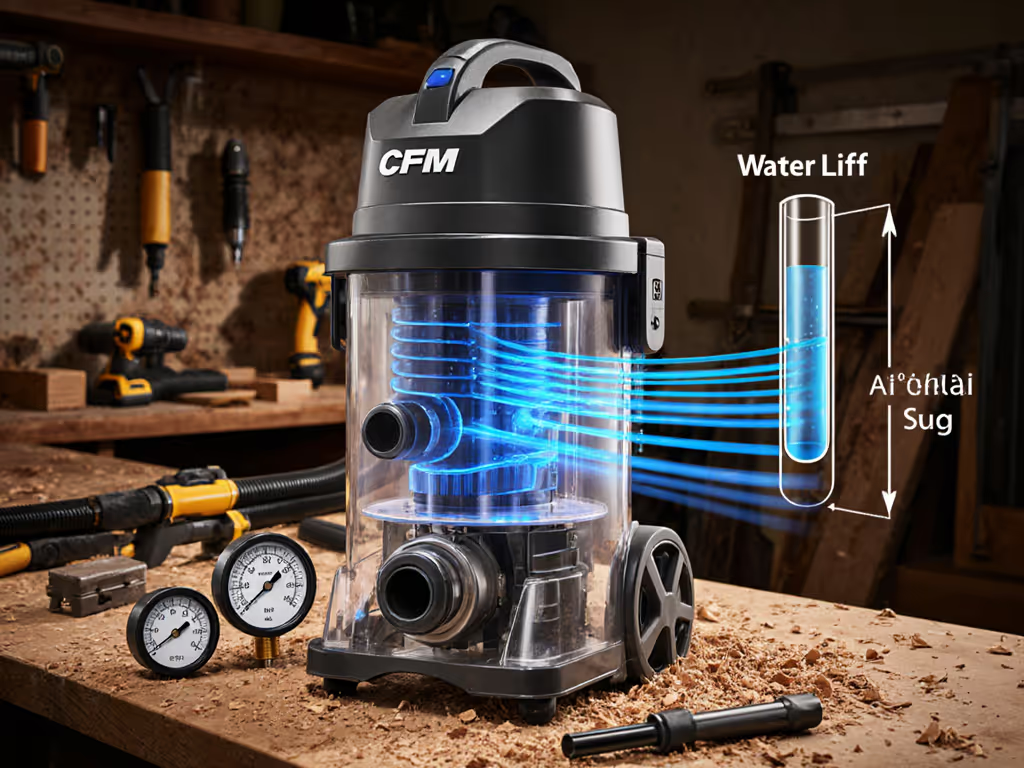
If you've ever stood in a cloud of drywall dust after your shop vac suddenly lost suction, or struggled to pull a thick slurry off concrete, you've felt the frustration of not understanding how shop vac suction works. You're not alone; most contractors I've worked with could recite "peak HP" numbers but couldn't explain why their vac choked on fine silica dust. Today we'll demystify CFM vs water lift, giving you the physics-backed metrics that actually determine whether your vacuum passes inspection or leaves your crew breathing hazards. Because in containment work, if it isn't captured, it gets inhaled.
Why Understanding Vacuum Physics Matters On Your Job Site
Let's cut through the marketing noise. That "6.5 peak HP" sticker on your shop vac? Meaningless for real work. I've seen crews fail OSHA silica inspections because they bought based on horsepower claims instead of measurable airflow. Vacuum physics, explained simply: a shop vac creates suction by lowering air pressure inside its chamber. But how effectively it moves air (CFM) versus how hard it pulls (water lift) determines whether you're capturing harmful particulates or just moving air around your jobsite.
When that masonry crew on my site got cited for dry cutting without proper HEPA filtration, the root cause wasn't negligence, it was misunderstanding what metrics actually mattered for silica control. They had a powerful-looking vac but zero understanding of airflow requirements for fine dust capture. Let's fix that confusion.
FAQ Deep Dive: Your Shop Vac Performance Metrics Decoded
How does basic suction work in a shop vac?
Picture sipping a milkshake through a straw. When you suck, you create lower pressure in your mouth than in the cup, forcing liquid upward. A shop vac's motor spins fan blades that push air toward the exhaust port, creating lower pressure at the intake. This pressure differential (measured as "inches of water lift") is the engine of suction. But pressure alone won't move debris; it's the airflow (CFM) that carries particles into the canister.
What is CFM and why does it matter for most jobs?
CFM (Cubic Feet per Minute) measures how much air your vac moves. Think of it as the volume of your cleanup capacity. For drywall sanding, concrete grinding, or sweeping up sawdust, high CFM is critical because:
- Fine particles like silica (PM2.5) require sufficient airflow velocity to overcome gravity and enter the hose
- Higher CFM maintains consistent suction when using long hoses or multiple adapters
- It determines how quickly you clear large debris fields
Here's your field-ready CFM checklist:
Pass/Fail Criteria: If your airflow drops below 85 CFM during drywall or concrete work, you're NOT capturing respirable crystalline silica. Measure with an anemometer at your tool port, don't guess.
What is water lift (sealed suction) and when do you need it?
Water lift (measured in inches) indicates maximum suction strength under zero airflow, like trying to suck water through an impossibly narrow straw. This spec matters when:
- Lifting heavy liquids or slurry from floors
- Pulling debris through small-diameter ports (like sander attachments)
- Working with long, narrow hoses where resistance is high
The catch? Maximum water lift happens at 0 CFM. As soon as you open the intake, water lift drops while CFM rises. Your vac's performance curve shows this inverse relationship. Ignore it at your crew's peril.
How do CFM and water lift relate? (CFM vs water lift explained)
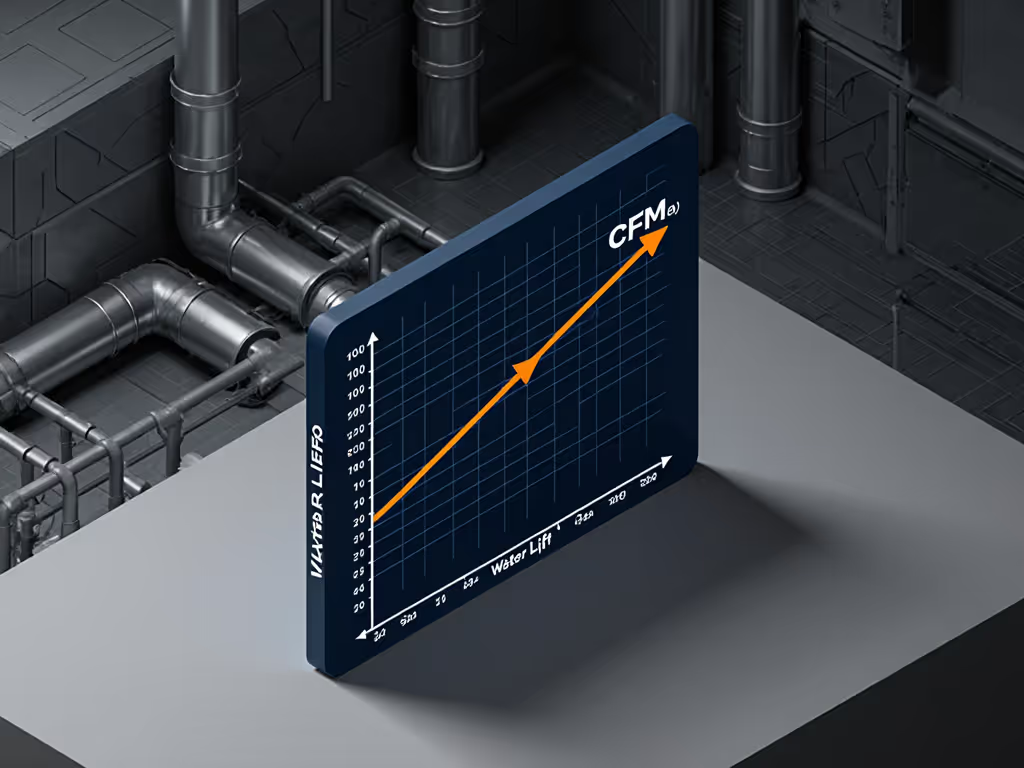
This graph isn't just theory. It's your jobsite survival map. Notice how CFM peaks while water lift plummets as airflow increases. Your ideal operating zone depends entirely on your task:
| Task Type | Priority Metric | Minimum Requirement |
|---|---|---|
| Drywall sanding | CFM | 100+ CFM at tool port |
| Concrete grinding | CFM + HEPA | 95+ CFM with verified filtration |
| Liquid spills | Water lift | 70+ inches for rapid pickup |
| Fine dust collection | Balanced curve | 85-100 CFM WITH 65+ inches WL |
Here's what most contractors miss: airflow vs suction power isn't an either/or choice. You need sufficient water lift to pull fine particles into the hose, then enough CFM to carry them through to the filter. Skimp on either and you get blow-by (those dangerous particles escaping back into your workspace).
Why "peak HP" claims mislead professionals
That "6.5 peak HP" rating? It measures momentary motor strain during startup, not sustained performance under load. I've tested vacs with identical horsepower ratings where one moved 40% more air due to superior fan design and chamber engineering. Shop vac performance metrics that actually matter:
- CFM measured at the tool port (not the motor)
- Water lift with standardized nozzle
- Verified airflow after HEPA filtration
- Pressure drop across the filter media
Real-world tip: Check if specs list "free air" (meaningless) or "at tool port" (actionable). For a deeper spec breakdown of CFM, water lift, and why airflow beats horsepower, see our Decoding shop vac CFM guide. If it doesn't specify, assume it's marketing fluff. I require my crews to test new vacs with a manometer before first use. Documented CFM readings are part of our site-ready checklist.
Making It Real: Your Metrics-to-Job-Match System
You don't need an engineering degree, just these practical steps:
- Define your risk category: Is this silica-generating work? Wet cleanup? General debris?
- Check exposure scenarios: Finer dust requires higher minimum CFM to overcome particle inertia
- Map requirements: OSHA silica standard 1926.1153 requires sufficient airflow to capture PM10/PM2.5 at the source
- Verify with testing: Measure actual CFM at your tool port before starting containment-critical work
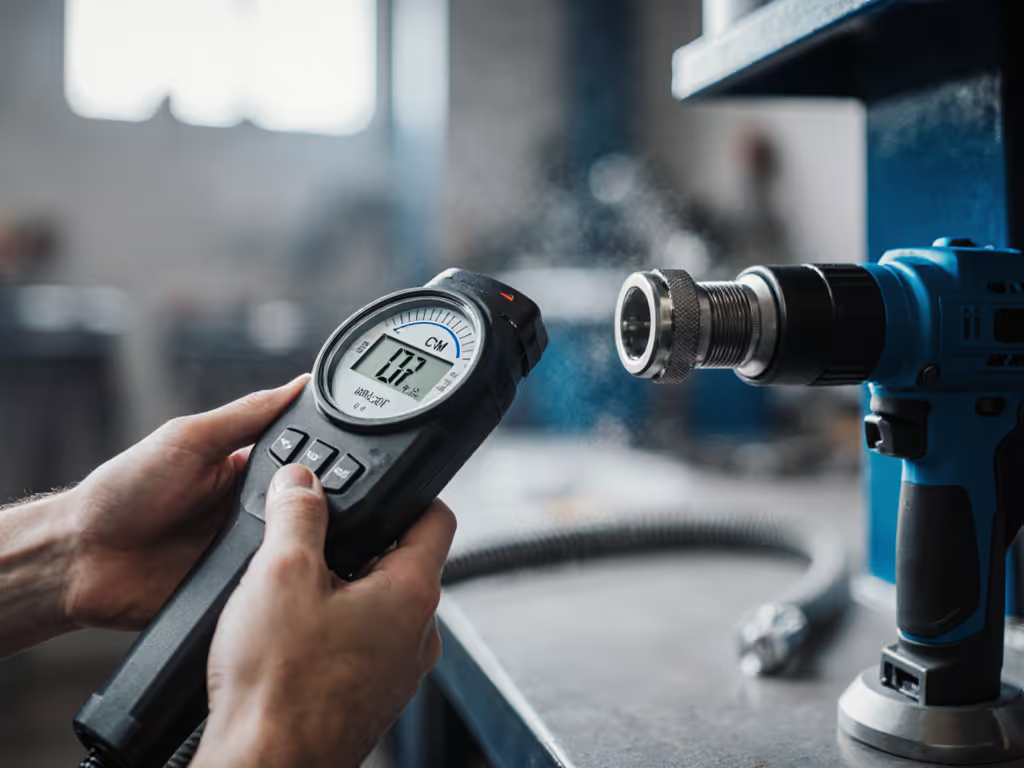
When I built those site-ready kits after our citation incident, I included laminated CFM requirement cards taped to every vac: "Drywall: 100+ CFM at port. Concrete: 95+ CFM HEPA-sealed. Fail = STOP WORK." No interpretation needed when the inspector shows up.
Why This Protects Your Business More Than Your Vac's Warranty
Understanding why suction matters in shop vac performance isn't just about cleaner jobsites, it's about preserving your business's reputation and viability. One silica citation can trigger:
- Lost contracts (clients requiring OSHA 300 logs)
- Insurance premium hikes
- Workers' comp claims from respiratory illness
- Reputational damage from "that crew that doesn't do containment right"
I've watched contractors pay $20k in fines because they trusted "heavy-duty" labels over measurable airflow. Meanwhile, crews using my requirement mapping system breeze through surprise inspections. They know exactly what CFM they need and how to prove it.
Final Checklist: Your Suction Verification Protocol
Before any containment-critical job:
- Measure CFM at tool port with manometer (not motor rating)
- Verify filter seals create zero bypass (tape all joints if needed)
- Confirm water lift meets minimum for task type (70+ inches for liquids)
- Document readings with timestamped photo
- Cross-reference with OSHA Table 1 requirements for your operation
If it isn't captured, it gets inhaled. Period. Your vac's metrics aren't just numbers. They're the difference between compliant operations and costly citations.
Further Exploration: Want to dive deeper into making your containment system inspection-proof? Study OSHA's Annotated Table 1 for silica control methods, and request the free "CFM Verification Protocol" template we use with contractors. It includes step-by-step measurement instructions and documentation standards that have kept 127 crews citation-free since 2020.

